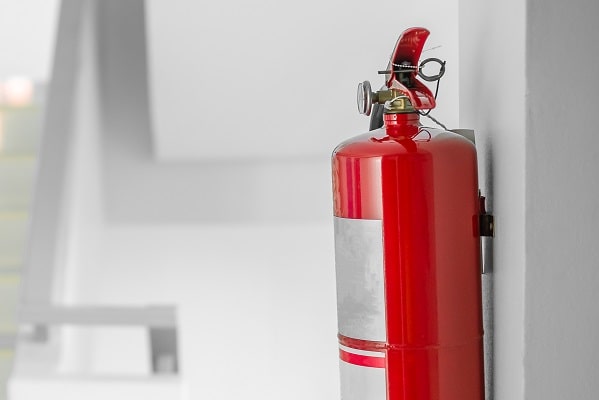Every Australian businesses must have an Emergency Plan that adheres to the AS 3745:2010 – “Planning for Emergencies in Facilities”. The AS 3745:2010 outlines the minimal requirements with regards to the emergency plan for your workplace. Your emergency plan will cover a range of potential emergencies relevant to your business. One emergency that is mandatory for all workplaces is a Fire Safety Policy.
How to write a Fire Safety Policy
Fire Safety Inspection
The first thing you need to do is perform a Fire Safety Inspection. You need to go through the AS 3745:2010 and check that you comply. Some items you will inspect are building exit signs on fire doors and evacuation maps on walls. You will check the position and condition of fire extinguishers. You will test the smoke alarms and make sure there is no impediment to fire safety exits.
Implement Recommendations
Once you have completed your fire safety inspection, you need to implement any changes required in order to be compliant.
Fire Safety Policy
The next step is to write the Fire Safety Policy in accordance with the AS 3745:2010. This will be a section within your Safety Policy or Emergency Policy. This policy will include details of what you need to have in place to be compliant, as well as procedures. The fire emergency procedures will be the centre point of the policy. You will also need a designated meeting point. It needs to be accessible to all facility occupants, large enough of a space for everyone to gather, and not too close to be in danger from the fire.
Appoint a Fire Safety Warden
Select a fire warden and train them on the fire safety policy and make sure they understand the evacuation procedures. In multi storey workplaces, you should assign a fir warden for every floor.
Fire Safety Procedure
The fire safety procedure outlines in step form, the procedure to be taken when there is a fire. A typical fire safety procedure is as follows;
- The fire alarm sounds
- Don’t panic and prepare to leave the building. There should be evacuation maps on the walls. The map will show a path to the nearest exit and the route to the designated meeting point.
- Leave personal items in the building and evacuate to the safe area. Listen to any instructions from the Fire Warden.
- Gather at the designated emergency meeting point. Your Fire Warden will take a roll call. Don’t leave until the Fire Warden says it’s okay.
How often do I have to have a Fire Drill?
To comply with the Australian Standard (AS) 3745-2010, once per year. If you’re a business that is at high risk then you should increase the frequency to every six months. The benefits of conducting a fire drill include;
- Giving employees (including fire wardens) practice in evacuation emergency procedures. If a fire does break out, your staff will be calm because they know what to do.
- Evaluating the effectiveness of evacuation procedures and identifying any changes
- Maintain compliance in accordance to the (AS) 3745-2010.
Need help developing a fire Safety policy?
Give Serene Safety a call to discuss how we can help.

